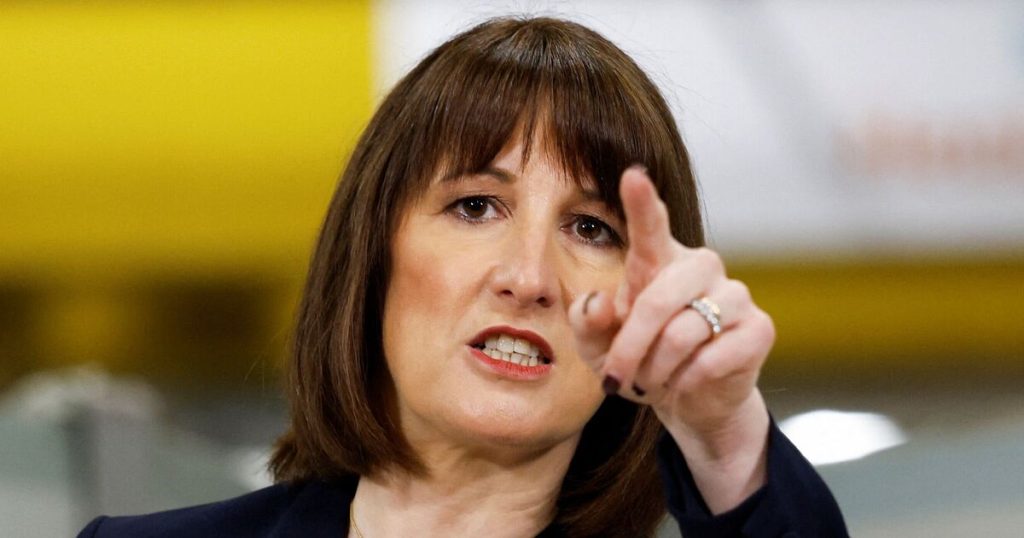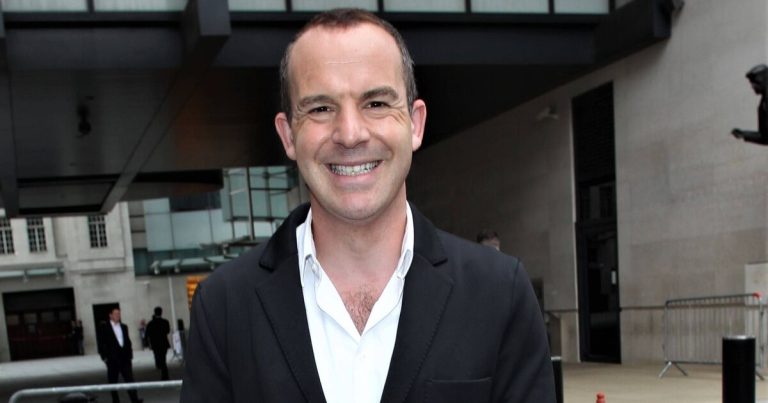

ISAs offer tax-free saving (Image: Alamy/PA)
Savers have been issued a critical call to action by a personal finance guru, who has highlighted the urgency of utilising a bountiful allowance before an impending annual cut-off.
With the April 5, 2025 deadline fast approaching, Alice Haine, personal finance analyst at Bestinvest by Evelyn Partners, has stressed the importance of capitalising on tax-free Individual Savings Accounts (ISAs) benefits before they vanish.
Haine cautions: “Tax-free Individual Savings Accounts (ISAs), such as a Stocks and Shares ISA, allow savers to earn income, grow their wealth and withdraw investments without fear of a heavy tax bill at the end – but they come with a ‘Cinderella-style’ deadline. Either you use the allowance by tax year end at midnight on April 5 or lose it forever – and not even a stray slipper will save this lucrative window of opportunity.”
She further advises: “Of course, not everyone has a spare £20,000 to hand, but with the ISA clock ticking, taking advantage of as much of the allowance as you are able to, or transferring in assets held outside a tax wrapper, makes sense when you consider the savage cuts and long-term freezes to most personal tax allowances in recent years. No one wants to pay tax on money they have already been taxed on, which is why ISAs are a must-have financial accessory this tax year-end.”
Potential tax changes for ISA savers
Alice remarked: “Speculation that Chancellor Rachel Reeves may use her March spending review to make further tax changes, such as tweaking ISA rules or scrapping some products altogether, has been mounting in recent weeks. This follows calls from some city lobbyists to scrap Cash ISAs in a bid to divert more money into Stocks and Shares ISAs and investments that would benefit the wider economy. Meanwhile, the Lifetime ISA is being scrutinised by a Treasury Committee Inquiry into its suitability as a product for young people to simultaneously save for a first home and retirement.
“The outcome of the LISA inquiry is still pending and there is no clear indication of Reeves’ stance on ISA allowances yet – though several years ago she did advocate a lifetime cap. So, ISA changes may happen, or they may not. This is why savers and investors should ignore the speculation and continue to consider the ISA as their tax-efficient friend as they look to grow their savings and investments over the long term.”
Reasons to maximise your ISA allowance before the financial year ends
Your savings are protected from tax year after year
Adding money to an ISA ensures that all income and returns are tax-free, with the funds remaining safeguarded year after year. This tax protection becomes crucial when considering the drastic reductions to the annual dividend allowance and capital gains exemptions over the past two financial years.
Coupled with the increase in CGT rates in Rachel Reeves’ inaugural Budget, the unchanged Personal Savings Allowance, and the ongoing freeze on income tax thresholds until at least 2028, savers and investors are feeling the pinch from all sides. This makes them more likely to pay tax on their savings, thereby increasing the importance of ISAs.
An increasing number of people are expected to pay more income tax this financial year as substantial pay increases push salaries further into higher tax brackets or result in first-time payments. Therefore, the way individuals save their money is crucial for those aiming to minimise their tax liabilities.
Taxes applicable to savings and investments include:
The previous Tory government slashed the annual Capital Gains Tax (CGT) exemption to a mere £3,000 at the beginning of this tax year, a significant drop from the £12,300 it stood at in 2022-23. In a separate move, Reeves dramatically increased the CGT rate on investment gains to 24% for higher rate taxpayers and 18% for basic rate taxpayers (up from 20% and 10% respectively) in the Autumn Budget on October 30.
The cumulative effect of these changes means that those selling assets outside of a tax-wrapper will exhaust their CGT exemption much more quickly. The tax-free dividend allowance, an annual limit within which any dividend income is taxed at 0%, also took a hit at the start of this financial year, plummeting to just £500 – a fraction of the £5,000 it was in the 2016-17 tax year.
The amount you pay depends on your income tax band: basic rate taxpayers typically face a tax rate of 8.75% on dividends over the allowance. For higher rate taxpayers, the dividend tax rate is 33.75%, while additional rate taxpayers are charged at a rate of 39.35%.
Dividends earned from shares or funds held within an ISA are not taxable, underscoring the benefits of keeping income-generating assets within an ISA.
The Personal Savings Allowance (PSA) has remained unchanged since its inception in 2016, allowing basic rate taxpayers to earn £1,000 in tax-free interest on savings outside of ISAs. Those paying the higher 40% income tax rate have a £500 allowance, while additional rate taxpayers earning over £125,140 and subject to 45% income tax, receive no such benefit.
This means that for every £100 in interest earned above the allowance on a regular savings account, a basic rate taxpayer would only pocket £80 once tax is deducted. For higher rate taxpayers, it’s £60 and for additional rate taxpayers, it’s just £55, further emphasising the appeal of transferring savings into a tax-protected ISA.
You can stash your money in investments or cash – or both
Alice highlighted the flexibility of ISAs, with the £20,000 annual allowance able to be saved in cash or investments. Savers can also divide their allowance across different types of ISA.
Eligible individuals can contribute up to £4,000 into a Lifetime ISA, which is included in their overall £20,000 allowance, or they can participate in peer-to-peer lending with an Innovative ISA, which allows people to lend up to £20,000 to borrowers or businesses without their money being taxed.
Selecting the appropriate ISA for your financial objectives is crucial to maximise your allowance. For instance, a young saver aiming to accumulate a deposit for their first home could invest £4,000 in a LISA (either cash or investments) to secure the maximum £1,000 annual top-up (25% of their contribution) from the Government, and then distribute the remaining £16,000 across a Stocks and Shares ISA or Cash ISA, depending on their savings timeline.
The Cash ISA has recently been under fire, following rumours that city lobbyists have encouraged the Chancellor to abolish it in an effort to redirect more funds into Stocks and Shares ISAs. During a meeting with Reeves, they reportedly argued that diverting some of the £300 billion currently held in Cash ISAs into the stock market would provide a much-needed boost to UK PLC.
They suggested this would be more economically beneficial than keeping money in Cash ISAs, which offer no advantage to the Treasury as the money can earn interest tax-free. If these reports are accurate, they not only indicate a potential move against Cash ISAs, but also suggest limiting Stocks and Shares ISAs, at least partially, to UK equities.
Alice noted that this is all conjecture at this point, and it’s possible that there will be no changes to the Cash ISA. If the Cash ISA does undergo a revamp, perhaps imposing a limit on the amount that can be saved into a Cash ISA would be a more suitable solution – a situation that was in place until the summer of 2014.
While Stocks and Shares ISAs have the potential to yield higher returns than cash over the long term, outpacing inflation and surpassing interest earned on cash, there is still a role for the Cash ISA. From a public policy standpoint, eliminating the Cash ISA could be an effective strategy to encourage more people to invest in UK businesses.
However, the current ISA system’s strength lies in its adaptability for the end user. Investing in the stock market isn’t suitable for everyone, and investors typically need a time frame of at least five years or more to weather any fluctuations.
Furthermore, there may be times when individuals want to reduce the risk of their investment portfolio temporarily and keep some of their long-term savings in cash, perhaps to achieve a short-term financial objective like paying off a mortgage or because they believe markets are overpriced.
You can now have multiple ISAs of the same type
Previously, savers could only contribute to one ISA of each type per year.
However, new regulations that came into effect at the beginning of this tax year permit savers to subscribe to multiple ISAs of the same type, with the exception of the Lifetime ISA and Junior ISA, within the same tax year.
Alice highlighted that this is beneficial for investors who wish to utilise multiple providers or have separate ISAs for various financial objectives. For Cash ISA savers, the rule change allows them to seek out the best deals and open a new account if a more competitive rate becomes available.
The rule change has somewhat simplified ISA saving and eliminated some confusion for consumers. Previously, some savers inadvertently opened or contributed to two ISAs of the same type, possibly due to a regular payment into one Stocks and Shares ISA and then an accidental payment into another.
Errors can still occur if individuals do not meticulously monitor their contributions. People may lose track of how much they have contributed to different ISAs, increasing their risk of exceeding the £20,000 allowance limit.
And don’t presume HMRC won’t notice, as providers are required to report all ISA subscriptions to HMRC at the end of the tax year. If you have over-contributed this tax year, notify your ISA provider and ask them to remove the excess payment and correct the mistake.
If the oversubscription happened in a previous tax year, do not attempt to fix the situation yourself. Instead, wait for HMRC to contact you with further instructions or reach out to HMRC directly for advice.
You can easily transfer money in and out
Alice highlighted the flexibility of most Stocks and Shares ISAs and easy-access Cash ISAs, which allow for a broad range of asset investments. These ISAs permit you to withdraw money and pay it back in without the new contribution affecting your ISA allowance, as long as the funds are replaced within the same tax year.
This makes ISAs an effective savings tool for various financial goals, acting like a pot you can dip into whenever necessary. This feature may be particularly beneficial for Cash ISAs, but remember that most Stocks and Shares ISAs also allow people to hold cash awaiting investment.
However, this flexibility does not extend to LISAs. Withdrawals before the age of 60 or for anything other than a first property purchase for a home valued under £450,000, incur a 25% penalty on the total amount withdrawn.
This is why the LISA is currently under scrutiny, with a Treasury Committee inquiry assessing its suitability. The £450,000 cap on the value of a first home a LISA saver can use their pot for is restrictive, as it has never increased and average homes in some parts of the country, especially in London, exceed this limit – a factor that can prevent first-time buyers from using their LISA pot for its intended purpose.
Alice commented: “The withdrawal penalty – 25% of the full sum taken out – is also unfair as it not only removes the original Government bonus provided on subscription but also a portion of the saver’s own money. While it is unclear what the outcome of the review will be, solutions such as indexing the property value cap to inflation so that it moves in line with house price growth, scrapping it entirely, or reducing the penalty on withdrawals from 25% to 20% so that it does not take away people’s hard-earned savings could potentially improve outcomes for savers currently caught out by LISA rules.”
Savers can load their Stocks and Shares ISA with cash before
She further advised those considering an investment ISA not to rush their decision-making process. Alice explained that savers can initially deposit their money as cash and make their investment choices later.
She said: “Building an investment portfolio from scratch can be challenging enough without adding a ticking clock to the process as the end of the tax year edges closer. No one should feel under pressure to make hasty investment decisions that they may later regret, so securing their ISA allowance initially with cash and investing it later ensures you don’t miss out.”
Regular investments can also yield significant rewards
People don’t need to deposit lump sums to invest in an ISA, after all, how many of us have a spare £20,000 lying around?
Instead, they can make regular contributions either on an ad hoc basis or through regular deposits – such as via a monthly Direct Debit. This can be particularly beneficial for those who are risk-averse, who may be hesitant to invest a large sum of cash at once in case the markets suddenly plummet.
The investor simply selects the amount they wish to invest, and the suitable investments to invest in, aligned with their risk tolerance and financial goals – something many people already do with their workplace pension. Investing regularly rather than sporadically can help investors become more disciplined long-term savers, especially those that struggle to find the time or motivation to make deposits every four weeks.
Committing to a fixed sum every month, an amount that won’t leave the household budget short and won’t get touched once it is in your investment account, is an effortless way to establish a savings habit that can last a lifetime.
Regular saving can help to take the emotion out of investing. With our busy lives, monitoring the fluctuations of a specific stock or fund can be overwhelming or stressful, especially for those new to investing.
Monthly investing utilises pound-cost averaging, meaning instead of investing a large sum at one price point – such as during a perceived dip – investors can purchase smaller amounts at regular intervals regardless of the current price, mitigating the impact of short- to medium-term volatility. While it may not necessarily yield larger profits – or prevent losses – it will help to even out returns and reduce volatility over time.
Investors should bear in mind that they typically need a time horizon of at least five years, allowing their money sufficient time to weather any financial market turbulence. Financial markets, particularly equities, can experience short-term volatility, but historically they have provided much higher real returns – with a greater likelihood of outpacing inflation – than cash savings over the long term.
Children too can reap the tax benefits of an ISA
While adults can stash away up to £20,000 per tax year, children are also entitled to an ISA – a Junior ISA (JISA) – albeit with a limit of £9,000 each tax year. Junior ISAs have become a favoured method for parents and relatives to accumulate tax-efficient savings and investments for a child.
The tax perks mirror those of an adult ISA – no capital gains tax, and no additional tax on income – with the option to withdraw funds from the age of 18 when it automatically transitions into an adult ISA. This makes it a handy resource for covering university expenses or a future property deposit.
Parents have the choice to open a JISA with either cash or stocks and shares – though the latter could potentially yield higher returns over a longer period. If a child earns more than £100 in interest on a regular savings account from money gifted by the parent, the parent is responsible for tax on the interest exceeding their own Personal Savings Allowance – a problem that can be circumvented by opening a JISA.
Couples can double up on their ISA allowance
Alice pointed out that married couples and civil partners enjoy a significant tax benefit over cohabiting couples who haven’t formalised their relationship – the capacity to make ‘interspousal transfers’. This allows savings and investments to be transferred to a spouse subject to lower tax rates without triggering a taxable event.
This strategy enables the couple to utilise two sets of allowances – such as the Personal Savings Allowance, dividend allowance and CGT allowance, as well as two ISAs – to minimise the family’s overall tax liability. Transfers between spouses and civil partners are exempt from tax, so funds designated for investment can be moved between them without attracting HMRC attention – particularly beneficial if one partner has exhausted their allowances and the other hasn’t.
Therefore, a couple could potentially save up to £40,000 in ISAs in a single tax year. However, before transferring shares, funds or cash to your partner, bear in mind that the ISA will be in their name and they will become the full, legal owner of the assets, so tread carefully if the relationship is unstable.
Don’t have immediate cash to invest?
Not everyone has large sums of money readily available to invest, but they may possess shares or funds outside a tax wrapper in the form of share certificates, or in a General Investment Account that could gain from being transferred into a tax-free ISA. To circumvent tax allowance reductions, investors can sell shares or funds and repurchase them within an ISA – a method known as ‘Bed and ISA’ – to shield future returns from tax charges.
While you may incur CGT on any realised gains above your annual allowance during this process, relocating the money into an ISA means you won’t have to in the future.
Alice urged investors to act swiftly, stating: “With less than seven weeks remaining, allow enough time to complete the Bed and ISA process before the deadline. Bed and ISA deadlines typically fall several days before the end of the tax year, so starting sooner rather than later is a good idea.”







